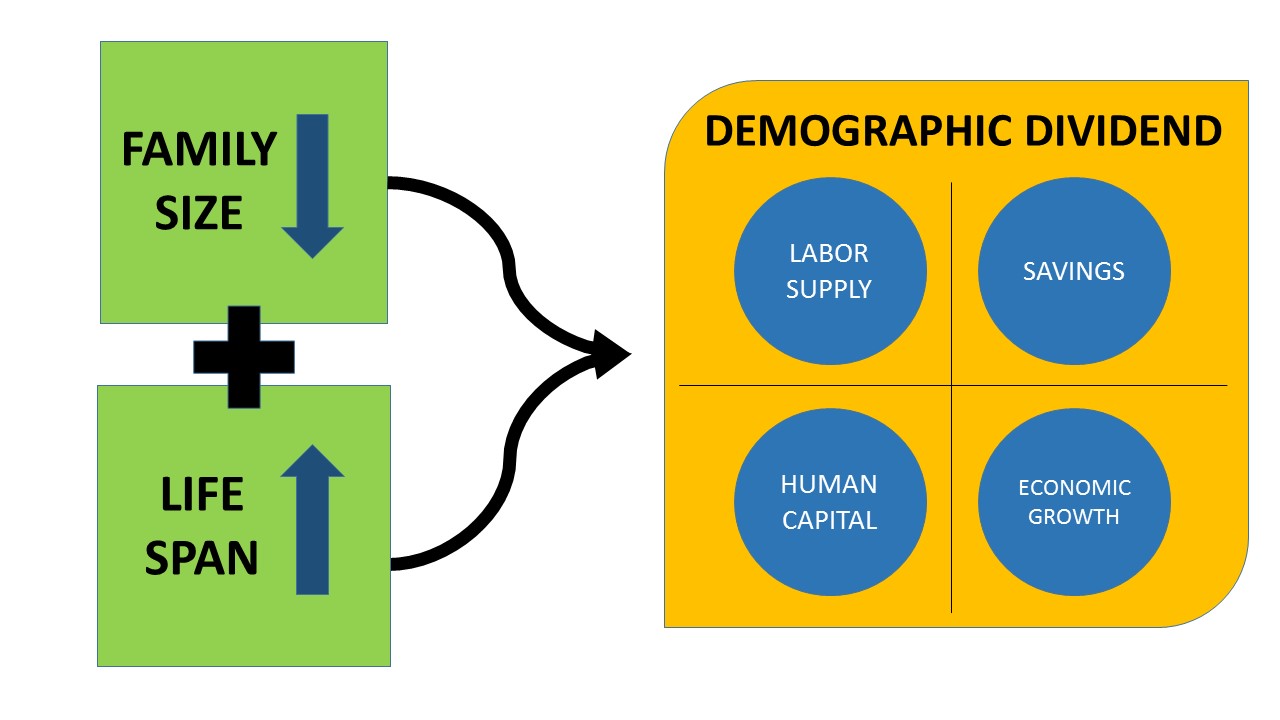In simple terms, the demographic dividend is the economic growth that may result from changes to a country’s age structure, due to the shift from people living short lives and having large families to living long lives and having small families. Because of this change in age distribution, fewer investments are needed to meet the needs of the youngest age groups and resources are freed up for what is called the “economic gift.” This means that the labor force is growing more rapidly than the population that is dependent on it, creating a window for faster economic growth and family welfare. In theory, at the micro level, this transition can result in better living standards for families and higher incomes per person while at the macro level, it can have significant gains in the economic development of a country.
What are the Benefits of a Demographic Dividend?
When a country finds itself with such a shifting age structure, there are four areas where benefits, or dividends, are typically found.
1. Labor Supply

- The economy is able to take in and productively employ more workers.
- Women are more likely to take jobs outside the home.
2. Savings
- Personal savings grow and can serve as a resource for fueling the economy.
3. Human Capital
- Decreases in fertility rates result in healthier women and fewer economic pressures at home.
- Parents are able to invest more resources per child, leading to better health and educational outcomes.
4. Economic Growth
- An increase in GDP per capita due to the decreasing dependency ratio.
What are the Barriers to a Demographic Dividend?
However, these benefits are assuming appropriate social, political, and economic policies are in place to reach the dividend. This means that countries with the greatest demographic advantages for development are those not only entering a period of decreased fertility, but have also implemented policies and programs focused on family planning and reproductive health, quality education, creating jobs and work opportunities, investments in women and girls, and good governance.
Ultimately, the benefits of the demographic dividend are not automatic. Reduced fertility by itself provides no guarantee of prosperity. The magnitude of the demographic dividend, thus, depends on the rate of fertility decline and the pace of population growth, the ability to productively employ the extra workforce, and the nature of political, economic and social reforms that countries adopt.
For examples of countries reaching for or experiencing a demographic dividend, read our posts: Ethiopia and the Demographic Dividend, and South Korea’s Demographic Dividend: A Success Story.




